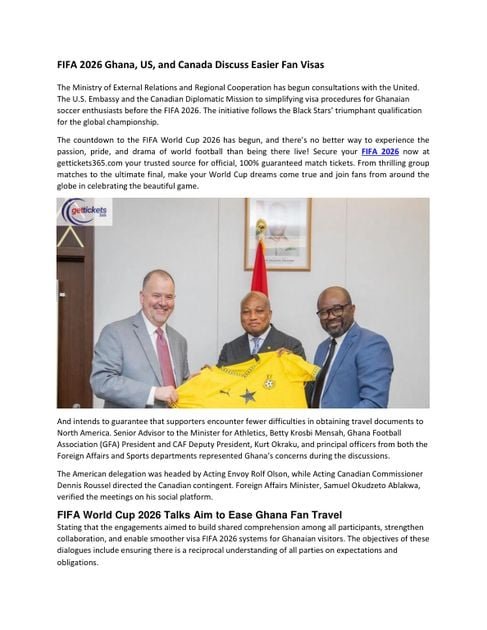Suggest an improvement
var gform;gform||(document.addEventListener(“gform_main_scripts_loaded”,function()gform.scriptsLoaded=!0),document.addEventListener(“gform/theme/scripts_loaded”,function()gform.themeScriptsLoaded=!0),window.addEventListener(“DOMContentLoaded”,function()gform.domLoaded=!0),gform=domLoaded:!1,scriptsLoaded:!1,themeScriptsLoaded:!1,isFormEditor:()=>”function”==typeof InitializeEditor,callIfLoaded:function(o),initializeOnLoaded:function(o)gform.callIfLoaded(o),hooks:action:,filter:,addAction:function(o,r,e,t)gform.addHook(“action”,o,r,e,t),addFilter:function(o,r,e,t)gform.addHook(“filter”,o,r,e,t),doAction:function(o)gform.doHook(“action”,o,arguments),applyFilters:function(o)return gform.doHook(“filter”,o,arguments),removeAction:function(o,r)gform.removeHook(“action”,o,r),removeFilter:function(o,r,e)gform.removeHook(“filter”,o,r,e),addHook:function(o,r,e,t,n)null==gform.hooks[o][r]&&(gform.hooks[o][r]=[]);var d=gform.hooks[o][r];null==n&&(n=r+”_”+d.length),gform.hooks[o][r].push(tag:n,callable:e,priority:t=null==t?10:t),doHook:function(r,o,e)var t;if(e=Array.prototype.slice.call(e,1),null!=gform.hooks[r][o]&&((o=gform.hooks[r][o]).sort(function(o,r)return o.priority-r.priority),o.forEach(function(o)”function”!=typeof(t=o.callable)&&(t=window[t]),”action”==r?t.apply(null,e):e[0]=t.apply(null,e))),”filter”==r)return e[0],removeHook:function(o,r,t,n)var e;null!=gform.hooks[o][r]&&(e=(e=gform.hooks[o][r]).filter(function(o,r,e)),gform.hooks[o][r]=e));

-
N/AFix spelling/grammar issueAdd or fix a linkAdd or fix an imageAdd more detailImprove the quality of the writingFix a factual error
-
You don’t need to tell us which article this feedback relates to, as we automatically capture that information for you.
-
This allows us to get in touch for more details if required.
-
Enter a five letter word in lowercase
#gform_wrapper_38 .gform_footer visibility: hidden; position: absolute; left: -100vw;
-
This field is for validation purposes and should be left unchanged.
/* = 0;if(!is_postback)return;var form_content = jQuery(this).contents().find(‘#gform_wrapper_38’);var is_confirmation = jQuery(this).contents().find(‘#gform_confirmation_wrapper_38’).length > 0;var is_redirect = contents.indexOf(‘gformRedirect(){‘) >= 0;var is_form = form_content.length > 0 && ! is_redirect && ! is_confirmation;var mt = parseInt(jQuery(‘html’).css(‘margin-top’), 10) + parseInt(jQuery(‘body’).css(‘margin-top’), 10) + 100;if(is_form)jQuery(‘#gform_wrapper_38’).html(form_content.html());if(form_content.hasClass(‘gform_validation_error’))jQuery(‘#gform_wrapper_38’).addClass(‘gform_validation_error’); else jQuery(‘#gform_wrapper_38’).removeClass(‘gform_validation_error’);setTimeout( function() /* delay the scroll by 50 milliseconds to fix a bug in chrome */ jQuery(document).scrollTop(jQuery(‘#gform_wrapper_38’).offset().top – mt); , 50 );if(window[‘gformInitDatepicker’]) gformInitDatepicker();if(window[‘gformInitPriceFields’]) gformInitPriceFields();var current_page = jQuery(‘#gform_source_page_number_38’).val();gformInitSpinner( 38, ‘https://geekymedics.com/wp-content/plugins/gravityforms/images/spinner.svg’, true );jQuery(document).trigger(‘gform_page_loaded’, [38, current_page]);window[‘gf_submitting_38’] = false;else if(!is_redirect)var confirmation_content = jQuery(this).contents().find(‘.GF_AJAX_POSTBACK’).html();if(!confirmation_content)confirmation_content = contents;jQuery(‘#gform_wrapper_38’).replaceWith(confirmation_content);jQuery(document).scrollTop(jQuery(‘#gf_38’).offset().top – mt);jQuery(document).trigger(‘gform_confirmation_loaded’, [38]);window[‘gf_submitting_38’] = false;wp.a11y.speak(jQuery(‘#gform_confirmation_message_38’).text());elsejQuery(‘#gform_38’).append(contents);if(window[‘gformRedirect’]) gformRedirect();jQuery(document).trigger(“gform_pre_post_render”, [ formId: “38”, currentPage: “current_page”, abort: function() this.preventDefault(); ]); if (event && event.defaultPrevented) return; const gformWrapperDiv = document.getElementById( “gform_wrapper_38” ); if ( gformWrapperDiv ) const visibilitySpan = document.createElement( “span” ); visibilitySpan.id = “gform_visibility_test_38”; gformWrapperDiv.insertAdjacentElement( “afterend”, visibilitySpan ); const visibilityTestDiv = document.getElementById( “gform_visibility_test_38” ); let postRenderFired = false; function triggerPostRender() if ( postRenderFired ) return; postRenderFired = true; gform.core.triggerPostRenderEvents( 38, current_page ); if ( visibilityTestDiv ) visibilityTestDiv.parentNode.removeChild( visibilityTestDiv ); function debounce( func, wait, immediate ) var timeout; return function() var context = this, args = arguments; var later = function() timeout = null; if ( !immediate ) func.apply( context, args ); ; var callNow = immediate && !timeout; clearTimeout( timeout ); timeout = setTimeout( later, wait ); if ( callNow ) func.apply( context, args ); ; const debouncedTriggerPostRender = debounce( function() triggerPostRender(); , 200 ); if ( visibilityTestDiv && visibilityTestDiv.offsetParent === null ) const observer = new MutationObserver( ( mutations ) => mutations.forEach( ( mutation ) => if ( mutation.type === ‘attributes’ && visibilityTestDiv.offsetParent !== null ) debouncedTriggerPostRender(); observer.disconnect(); ); ); observer.observe( document.body, attributes: true, childList: false, subtree: true, attributeFilter: [ ‘style’, ‘class’ ], ); else triggerPostRender(); } );} );
/* ]]> */

Measuring and recording fluid intake and output and calculating a fluid balance can appear in OSCEs. You’ll be expected to correctly record intake and output using a fluid balance chart and calculate an overall fluid balance.
Accurate fluid balance monitoring in unwell patients and those susceptible to dehydration or fluid overload is essential to identify fluid imbalances and inform patient management.1-4
Indications
In general, most indications for fluid balance monitoring are likely to follow one or more broad themes:1, 3
- Acute illness
- Reduced fluid intake
- Reduced urine output
- Increased fluid output
- Fluid overload
Gather equipment
Gather the appropriate equipment for fluid balance monitoring:1, 3
- Fluid balance chart
- Equipment to accurately measure fluid intake/output, as required (i.e. measuring jug, urine bottle, catheter bag, bedpan, weighing scales, etc.)
Introduction
Fluid balance is a continuous process. Ensure you tailor any introduction required for patient-facing tasks based on the specific activity being undertaken.
Wash your hands and don PPE if appropriate.
Introduce yourself to the patient, including your name and role.
Confirm the patient’s name and date of birth.
Briefly explain what the monitoring will involve using patient-friendly language: “While you are unwell, we would like to accurately monitor how much fluid is going into your body and how much is coming out. This is called your fluid balance. It will involve the team recording every time you take in or lose fluid, such as when you drink or pass urine.”
Gain consent to proceed with fluid balance monitoring.
Monitoring fluid balance
Fluid balance monitoring is an ongoing clinical task that may be undertaken by staff across the multidisciplinary team. To maintain accuracy, everyone caring for the patient must be aware that fluid balance monitoring is in place and that fluid intake and output are recorded accurately during key clinical activities throughout the day. If appropriate, patients may also be encouraged to contribute to their own monitoring by noting the time and volume they drink.1-3
Recording fluid input
Ensuring accuracy
Recording fluid intake requires those documenting to be aware of the volume of fluid entering the body. For oral intake, this may be calculated using the known volume of each cup or jug.
Aside from oral fluids, patients may receive additional fluid intake through various sources, including:
- Intravenously (IV)
- Subcutaneously (SC)
- Nasogastric (NG), nasojejunal (NJ), or percutaneous endoscopic gastrostomy (PEG) feeding
Most additional forms of fluid input will be accurately administered using medical devices, such as volumetric and feeding pumps, which can be set to an hourly rate and easily recorded.
Ensure that all sources of fluid input are accurately recorded on the fluid balance chart.
Recording fluid output
Ensuring accuracy
Recording fluid output requires awareness of all potential sources of fluid loss. In addition to urine, this may include:1, 3-4
- Vomiting
- Diarrhoea
- Blood loss
- High stoma output
- Surgical drains
Fluid outputs can be accurately measured using collection devices such as drainage bags, urine bottles, bedpans, vomit bowls and kidney dishes, many of which have incremented volume measurements.
Ensure that all sources of fluid loss are accurately recorded on the fluid balance chart.
Urine output
Urine output should be >0.5 mL/kg/hr.
Monitor urine output closely for low urine output:
- Oliguria = urine output <0.5 mL/kg/hr
- Anuria = urine output <100 mL in 24 hours
And excessively high urine output:
- Polyuria = urine output >2500 mL in 24 hours
Abnormally low or excessively high urine output should be reported and escalated as per local guidelines.
Urine output with incontinence pads
Urine output using incontinence pads can be calculated by weighing the wet pad and subtracting the weight of a dry pad to determine the urine weight.
Urine output (mL) = weight of wet pad (g) – weight of dry pad (g)
1 g of urine is equivalent to 1 mL of urine
Insensible loss
Insensible loss refers to fluid loss from the body that cannot be accurately measured. This includes fluid loss through respiration, sweating, and faeces. Additional insensible losses may be related to the clinical condition (e.g. fluid lost from burns).
Whilst insensible loss is immeasurable, many estimations suggest that the amount of fluid lost through these mechanisms can be significant, especially during episodes of acute illness when increased sweating from fever and increased rate of respiration may be present.5
To account for these insensible losses, it is usual to expect an overall fluid balance trend to be slightly positive each day in a healthy individual.
Documenting fluid balance
A fluid balance chart typically consists of a table with specified columns to record input and output by type, with rows divided into hourly intervals for a 24-hour period.
Each hour, input and output are documented within the relevant column, depending on the route. At the end of the hour, the total is calculated and added to the ‘total input’ or ‘total output’. This is a running total and so includes all previous input/output from that 24-hour period and the volume from the last hour.
A final total is calculated at the end of the 24-hour period, by subtracting the total output from the total input.1, 3
Fluid balance = total input (mL) – total output (mL)
Charts may also include the patient’s fluid balance for the previous 24-hour period, patient weight, and target fluid intake and urine output for the current day. This allows clinical staff to easily view the patient’s fluid balance trend and current targets to support fluid management.1, 3
To complete the documentation…
When documenting fluid balance ensure that:
- Handwriting is clear and legible
- Patient details are correct
- All fluid input and output has been accurately recorded in the correct columns
- Hourly total input and total output balance has been calculated accurately
- Total fluid balance is calculated accurately by subtracting the total output from the total input
- Fluid balance is denoted as being either positive or negative
- Any errors are highlighted by strike-through whilst maintaining legibility
- Your name is printed and signed on the fluid balance chart
Documentation will often include escalation policies; ensure these are followed where required or if you are concerned about the patient.
Editor
Dr Jamie Scriven
References
- The Royal Marsden NHS Trust. The Royal Marsden Manual of Clinical and Cancer Nursing Procedures. Tenth ed. Available from: [LINK].
- Simpson D, Mcintosh, R. Measuring Fluid Balance. British Journal of Nursing. 2021. Available from: [LINK].
- Worcestershire Acute Hospitals NHS Trust. Fluid Balance Guideline. 2024. Available from: [LINK].
- National Institute for Health and Care Excellence (NICE). Intravenous fluid therapy in adults in hospital. Clinical guideline [CG174]. 2017. Available from: [LINK].
- McNeil-Masuka J, Boyer TJ. Insensible Fluid Loss. 2023. Available from: [LINK]
Discover more from Bibliobazar Digi Books
Subscribe to get the latest posts sent to your email.






